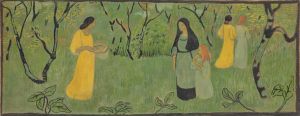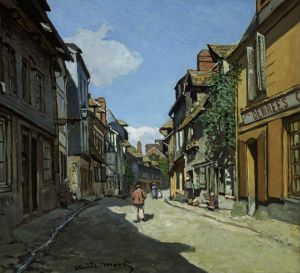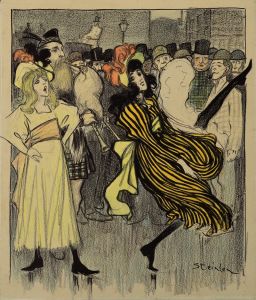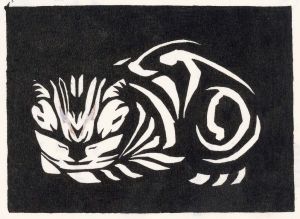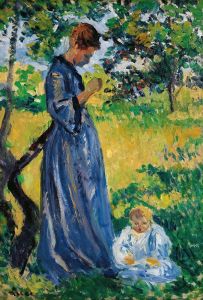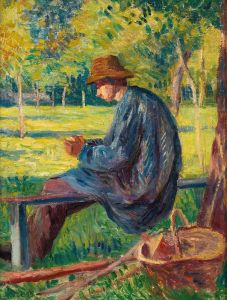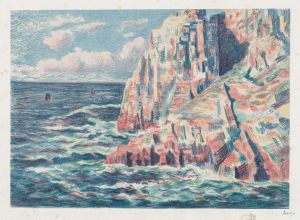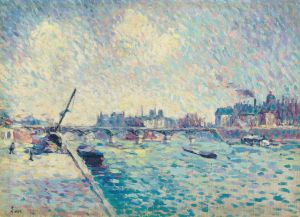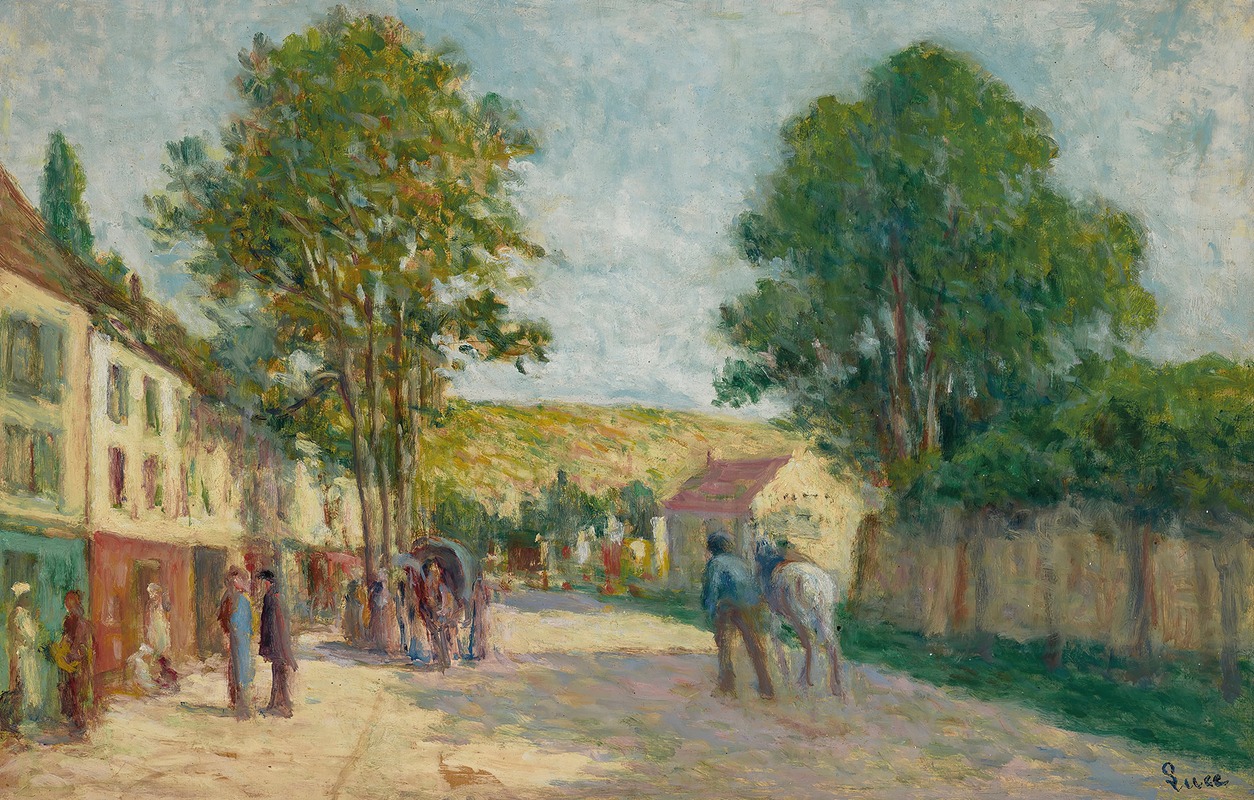
Environs de Paris
A hand-painted replica of Maximilien Luce’s masterpiece Environs de Paris, meticulously crafted by professional artists to capture the true essence of the original. Each piece is created with museum-quality canvas and rare mineral pigments, carefully painted by experienced artists with delicate brushstrokes and rich, layered colors to perfectly recreate the texture of the original artwork. Unlike machine-printed reproductions, this hand-painted version brings the painting to life, infused with the artist’s emotions and skill in every stroke. Whether for personal collection or home decoration, it instantly elevates the artistic atmosphere of any space.
Maximilien Luce, a prominent French Neo-Impressionist painter, created the artwork "Environs de Paris" during a period when he was deeply engaged with the Pointillist technique. Born in 1858, Luce was initially trained as an engraver before transitioning to painting, where he became associated with the Neo-Impressionist movement alongside artists like Georges Seurat and Paul Signac. This movement was characterized by the use of small, distinct dots of color applied in patterns to form an image, a technique known as Pointillism.
"Environs de Paris" is one of Luce's many works that capture the landscapes and scenes around Paris, reflecting his interest in the interplay of light and color. The painting exemplifies Luce's commitment to depicting the everyday life and natural beauty of the French countryside, a common theme in his oeuvre. His works often highlight the serene and tranquil aspects of rural and suburban life, contrasting with the bustling urban environment of Paris itself.
Luce's approach to painting was heavily influenced by his political beliefs. As an anarchist, he was deeply concerned with social issues and often depicted the working class and their environments in his art. This social consciousness is subtly reflected in "Environs de Paris," where the landscape is not just a backdrop but a living space that interacts with the people who inhabit it. His paintings from this period often convey a sense of harmony between humans and nature, emphasizing the beauty and simplicity of rural life.
The technique used in "Environs de Paris" involves the meticulous application of color, where Luce would place small dots of pure color next to each other. This method allows the viewer's eye to blend the colors optically, creating a vibrant and luminous effect. This technique was part of the broader Neo-Impressionist movement's attempt to bring scientific rigor to the art of painting, inspired by contemporary theories of color and perception.
Luce's work, including "Environs de Paris," is noted for its vibrant use of color and light, capturing the changing atmospheres and moods of the landscape. His paintings often feature a rich palette and a dynamic composition that draws the viewer into the scene. The attention to detail and the careful construction of the image reflect Luce's dedication to his craft and his desire to convey the beauty of the world around him.
Throughout his career, Luce remained committed to the ideals of the Neo-Impressionist movement, even as other artists moved on to different styles. His work continues to be celebrated for its technical skill and its ability to capture the essence of the French landscape. "Environs de Paris" stands as a testament to Luce's artistic vision and his ability to transform everyday scenes into works of profound beauty and significance.
Today, Maximilien Luce's paintings, including "Environs de Paris," are held in high regard and can be found in various museums and private collections around the world. His contributions to the Neo-Impressionist movement and his unique perspective on the world have left a lasting impact on the art world, ensuring his place in the history of modern art.






